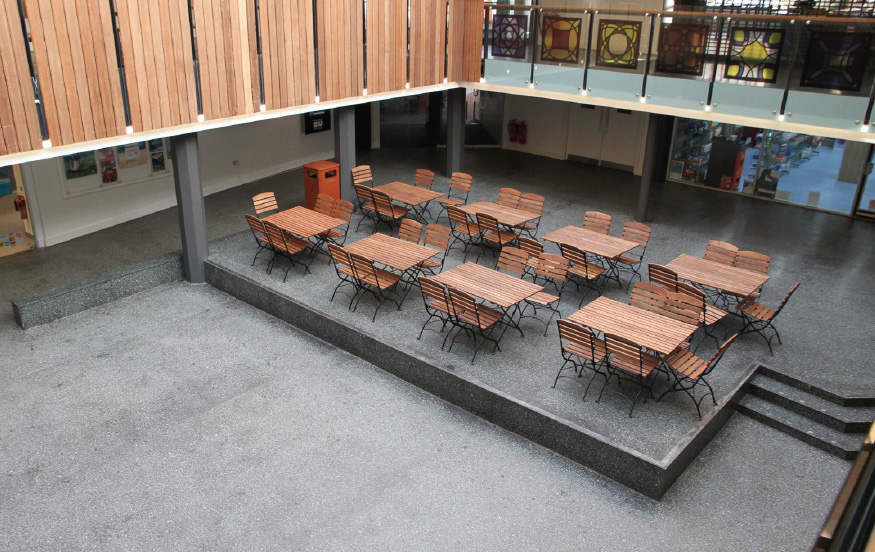Mastic asphalt is most commonly associated with flat roofing applications but due to its waterproofing properties, durability and versatility, it is being specified more and more for flooring projects.
So much so that the Mastic Asphalt Council (MAC), the trade association for the mastic asphalt industry in the UK, has introduced a new CPD presentation entitled ‘Mastic Asphalt: Flooring Solutions’ which is now available to be delivered online or in person.
Although mastic asphalt is one of the world’s oldest construction materials, it can sometimes be perceived as a one-dimensional waterproofing product that is only available in a standard black finish. But like many long-lasting, tried and tested materials, mastic asphalt is being re-imagined as a highly relevant building material for today.
Not only is mastic asphalt an ideal underlay to receive subsequent floor finishes such as carpet, vinyl or tiles, it is also an excellent flooring finish in itself, offering many benefits for the overall construction process.
Mastic asphalt is increasingly being used for flooring applications from light domestic to heavy industrial use, where a seamless, dust-free surface is required for highly trafficked areas. Polished, decorative grades of mastic asphalt are also proving increasingly popular.
Mastic asphalt comprises of suitably graded limestone aggregates bound together with an asphaltic cement – primarily refined bitumens – to produce a dense, voidless material. It cannot be compacted, and is spread by means of a hand float, rather than rolled.
Easily installed with no joints, no additional water is added to the building, making the overall drying time of the construction drastically shorter. Mastic asphalt can be put into use directly after cooling – usually within a few hours – reducing construction time considerably. It does not require compaction to reach its final stability and can absorb temperature variations and slow settlement without cracking.
Odourless during application, it does not create any dust and is non-flammable. When tested to the European fire classification standard EN 13501-1, it successfully achieves a fire classification rating of Bfl-s1, confirming the product is flame-retardant with very limited smoke development.
With high vapour resistivity in excess of 100,000 MN/g, it is listed as an approved radon and methane barrier and is non-toxic with no tar. Installed by trained craftspeople who are approved members of the Mastic Asphalt Council, mastic asphalt is 100% recyclable and it is often specified on the basis of its sustainability values as the UK mastic asphalt industry was the first in the world to achieve the CarbonZero standard.
Mastic asphalt flooring is typically graded according to its usage, namely Grade I – Special hard flooring, Grade II – Light duty flooring, Grade III – Medium duty flooring and Grade IV – Heavy duty flooring. Most forms of solid construction will provide a suitable base for mastic asphalt flooring applications and further guidance on substrates can be found in the MAC Flooring Technical Guide at https://masticasphaltcouncil.co.uk/flooring-technical-guide/.
In the commercial sector, MAC has seen a trend emerging of the use of mastic asphalt flooring incorporating terrazzo. Terrazzo flooring has made a resurgence due to its durability, longevity and low maintenance properties.
Modern interpretations of terrazzo have been created by combining decorative stone chippings with mastic asphalt, which is then polished to create infinite possibilities in any design situation. Other finishes can also be created – matt or smooth – as opposed to the highly polished effect normally associated with terrazzo. Slip and skid resistance can be incorporated into the wearing course of the mastic asphalt.
This article featured within the June 2022 edition of Tomorrow’s Contract Floors – click here to view the article.

